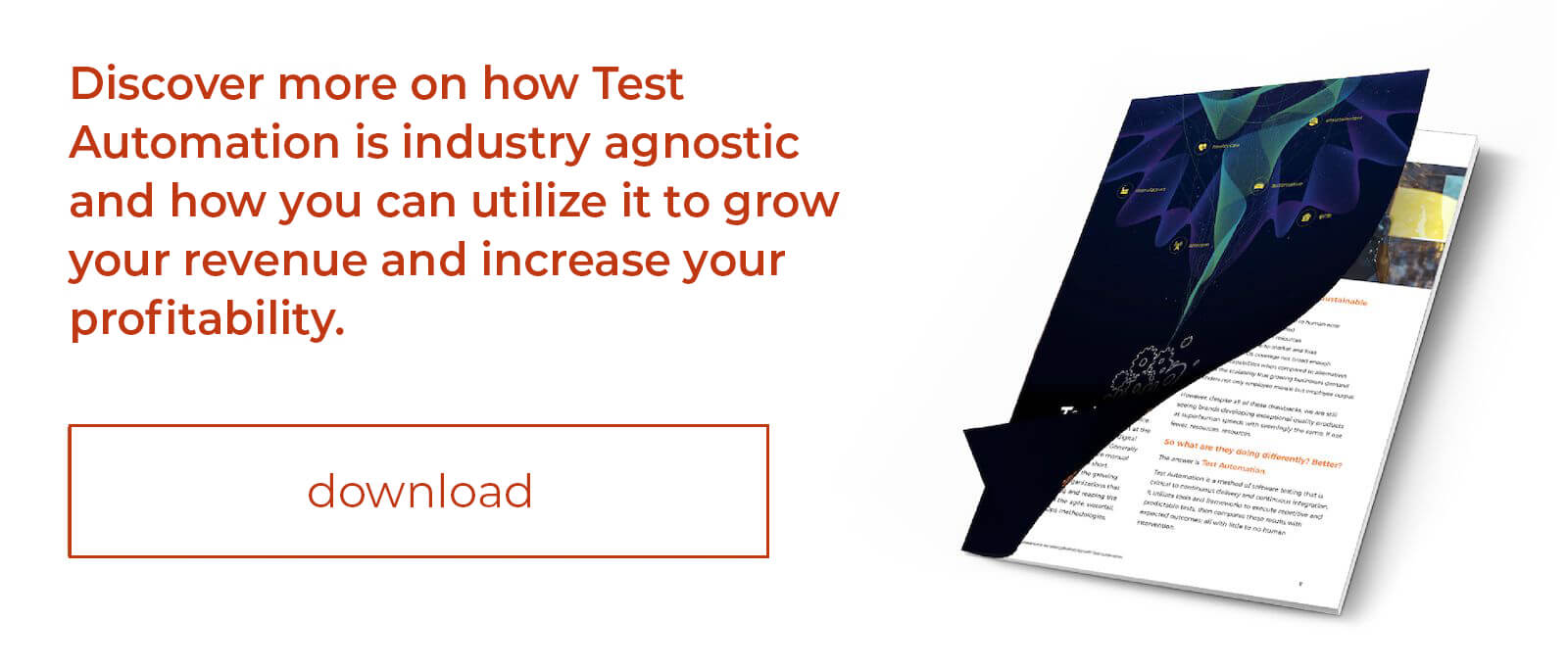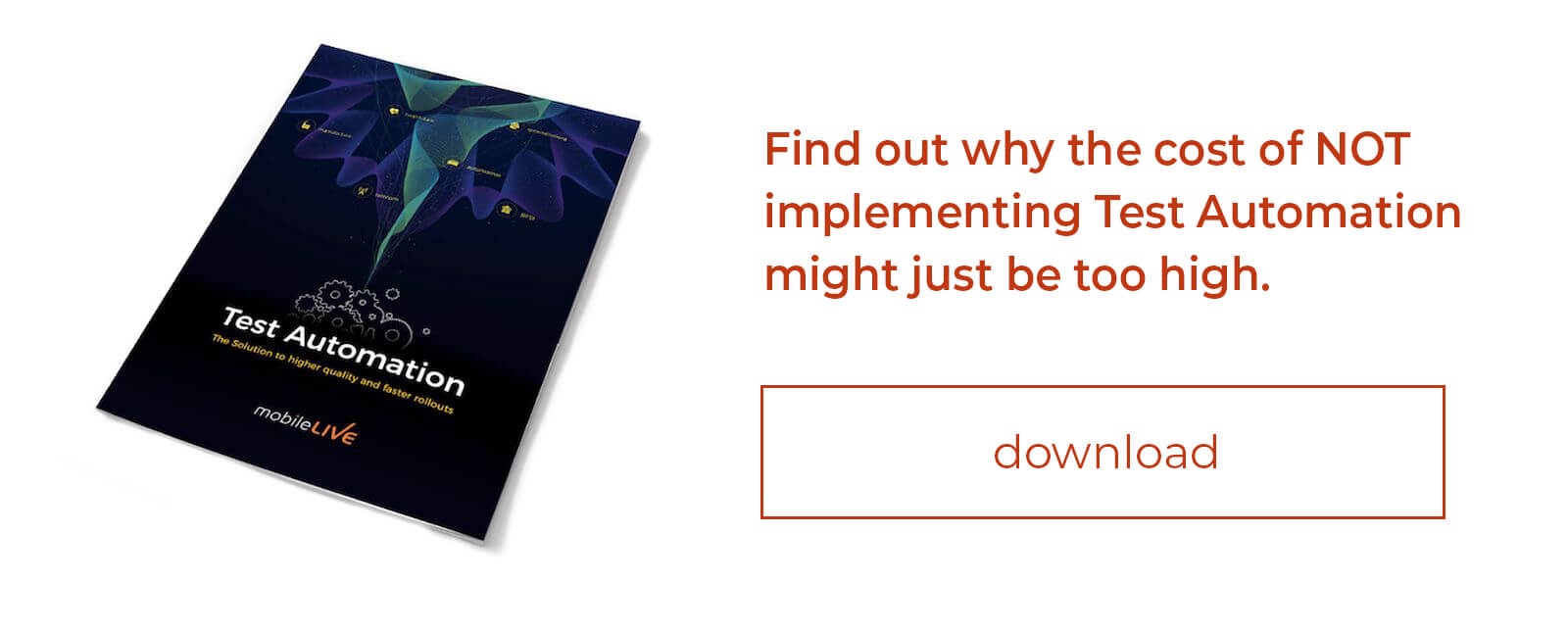
My daughter recently asked me if I would take her to the toy store. I had just come home from the office after a long day, and all I wanted to do was relax on the couch and watch TV. I told her I couldn’t, the reason being that I was “too tired” but I would gladly take her tomorrow. She, reluctantly, accepted my answer and went about her business, likely to pose the same question to my wife.
This is an example of an excuse, masquerading as a reason. I had no real reason preventing me from taking her; I just used me being tired as justification. Fortunately, the consequences of my excuse were virtually non-existent; my daughter only had to wait a day before she got what she wanted. Sadly, the same cannot be said for many of the excuses we make, especially in business, where most opportunities aren’t as persistent as my daughter.
Today, we are going to look at some of the most common excuses companies make for why they have not already implemented test automation. And while many of these excuses may sound familiar, or have been echoed within your own organization’s walls, the main takeaway from this is not the excuses themselves, but the benefits of test automation that you’re missing out on by making these excuses.

“The cost of test automation is just too high!”
In business, the number one excuse I hear for not doing something is the expense. However, interestingly enough, not incurring said expense usually comes at its own cost; often, a much higher one.
In the case of test automation, I usually hear test managers claim that the cost of implementation is just too high. This is understandable, after all, at first glance investing in automation or in an automation testing company may seem cost prohibitive – especially for smaller organizations. However, when implemented properly and utilized correctly, test automation will typically pay for itself through decreased labour, reduced time-to-market, and by allowing your teams to focus on more critical initiatives like customer needs and product functionality and improvement.

“I don’t really have a need for test automation.”
Perhaps the cost of test automation isn’t an issue for you. Maybe, you believe that your business simply wouldn’t benefit from such an initiative or by looking into the possibility of hiring an automation testing company – which is a fair point. Why would you want to incur any cost if there wasn’t a sufficient need to justify it?
But let me ask you, does customer experience and the perception they have of your brand matter to you? Would your organization benefit if it was able to not only produce better products but bring them to market much faster? What if you were able to reduce the operating expenses of your business, without sacrificing growth and profitability? How about ensuring that you can repeatedly and accurately run tests that help to ensure the highest quality products?
If you answered yes to even one of the above questions, then you certainly do have a need for test automation, one that won’t only delight your customers but improve your operational agility.

“I don’t think test automation will work in my industry.”
Of all the excuses I have been given as to why an organization is reluctant to adopt test automation or hire a test automation company, “I don’t think it will work in my industry” is undoubtedly the easiest to refute.
The truth when it comes to test automation is that it is, in fact, industry agnostic. That means test automation can be successfully implemented in any repetitive and predictable test environment, regardless of the industry. I personally have been involved in successful test automation implementations in Telecoms, Banks, as well as Healthcare, however, from Manufacturing, Insurance and other Financial Services, Media, Entertainment, and Automotive, examples of successful and profitable test automation implementation abound.

“Manual testing is better.”
In my experience, it is a bad practice to have a dogmatic allegiance to any one method of doing anything, especially when, if the circumstance is right, a better alternative presents itself.
In truth, when it comes to testing, there simply is “no better than the other,” just different, in both approach and application. Manual testing undoubtedly has its place, like for one-off tests or ones that require human observation, however, when it comes to time-consuming, tedious, repetitive, or missional critical tests; test automation can not only help brands develop quality software faster, but it also allows them to do so at scale and a fraction of the cost. Typically, the best testing strategy is one that utilizes both manual and automated testing and finds a happy medium that is uniquely tailored to your business.
I told my daughter the reason I couldn’t take her to the toy store was that I was tired, and that was my excuse parading as a reason. And the rationale behind doing it was that there were no significant consequences. However, by now, it should be clear that many of the excuses for not adopting test automation are not so consequence-free, and the sooner you start to accept them for what they are, excuses, not reasons, the sooner you will be able to make an accurate assessment as to whether test automation is right for you.





